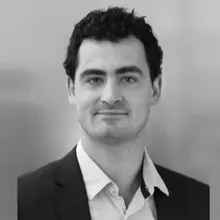Summary
Abstract
In recent years, asset management has embraced the Net-Zero paradigm for portfolio construction and the formation of mid- and long-term views. However, delays in climate transition go along with poor achievement of the Sustainable Development Goals (SDGs). With only a few years remaining to reach the objectives set for 2030, this paper aims to examine the SDGs’ framework and question its implementation by companies. We present a modern, NLP-driven perspective to map the SDGs to the transformations framework, while bringing back to the forefront SDG17, “partnership for the goals”, often brushed away or misinterpreted. In fact, our findings demonstrate that cooperation appears to be lacking for countries from developing countries, that are facing significant financing gaps for SDGs’ completion. In that spirit, we propose a news-based approach to track future corporate progress in collaborating with developing countries.
Key takeaways
- Sustainable Development Goals (SDGs) were adopted by the United Nations (UN) in 2015 to guarantee peace and prosperity for people and the planet. But SDGs targets achievements are not on track to meet 2030’s objectives: currently only 15% of targets have been reached.
- UN Sustainable Development Solutions Network (SDSN) promotes integrated approach to implement the SDGs and in this spirit, proposed the concept of SDG transformations, designing six-inter related long-term transformations, such as zero-carbon energy systems or universal health coverage.
- Using NLP and similarity measures, we map the 17 SDGs goals and targets to these transformations, augmented by a geographical focus to account for developing countries broad financing gap. Such synthetization step was thought by policymakers as a mean to push for broader and faster achievements of the SDGs.
- We found that each transformation covers around 6 SDGs. Most SDGs are covered by at least one of the transformations.
- While the transformation “zero-carbon energy systems” combines equivalently SDG7 (affordable and clean energy), SDG8 (decent work and economic growth), SDG9 (industry, innovation and infrastructure), SDG11 (sustainable cities and communities), SDG12 (responsible consumption and production) and SDG17 (partnership for the goals), we also highlight the relevance of the latter–SDG17– in all transformations but more particularly for the geographical focus.
- Despite having highlighted the importance of the partnership and cooperation, particularly within the geographical dimension, we witness that SDG17 is often disregarded in the financial industry, which considers that SDGs can be achieved in both developed and developing countries separately. Still, companies can contribute significantly to SDG17’s achievement –but also to those of SDG3, SDG4, SDG9 and SDG12– through the financing of developing economies.
- Foreign Direct Investments (FDIs) are one obvious channel for closing developing countries financing gaps while they can foster new market share and performance gains (productivity, profitability...) for the investing companies.
- We stress that companies undertaking “North-North” FDIs do not truly contribute to SDGs compared to those involved in “North-South” FDIs in the sense that the latter close developing countries’ financing gap. Yet, all “South” countries are not subject to high geopolitical risk, that usually dissuades investors to engage in FDI.
- However, filtering on a pool of events extracted from news for MSCI World companies (a developed market index), we find that cooperation does not seem to occur in developing countries (those under official development assistance).









